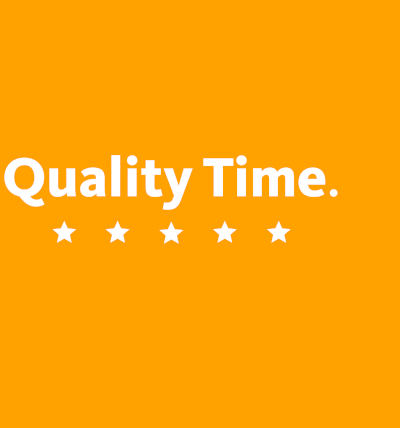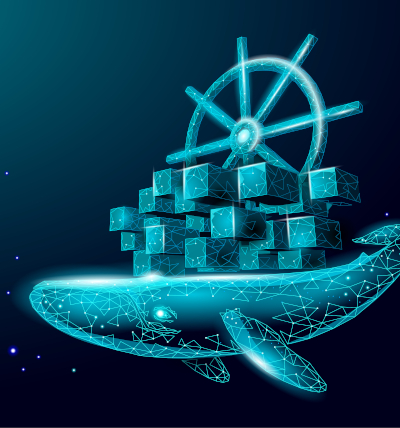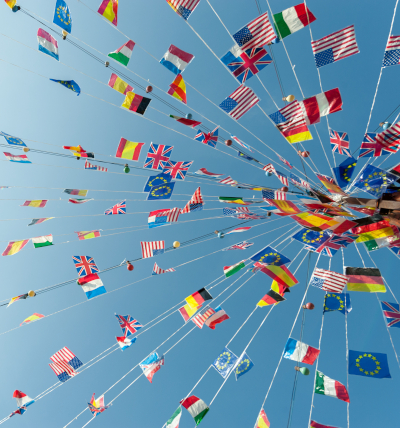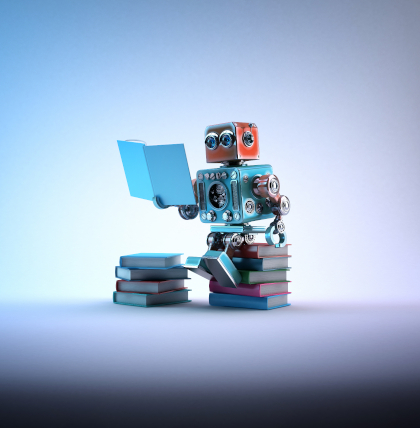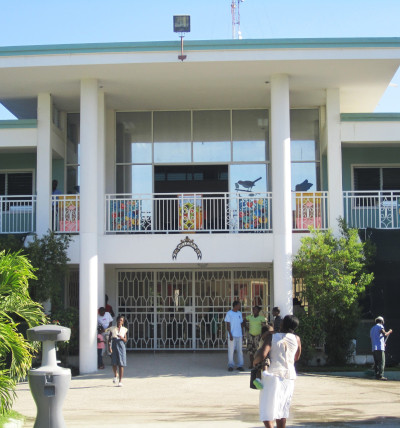
oneNews. Stay up to date with the latest news from oneword
On our blog you’ll find a round-up of the latest news from us, trends and topics in the translation industry, information about upcoming industry events, talks, training and conferences you shouldn’t miss, and other interesting information about languages and multilingual communication. Feel free to have a browse!
To make sure you never miss a news update, you can also receive onenews by e-mail.
“The focus is entirely on the practical benefits”: Sylvia Schumacher explains what makes oneSuite unique
oneSuite is our proprietary browser-based translation and localisation system for professional use. Sylvia Schumacher, our Head of Technology & Processes, plays a key role in developing and refining the software. So, although it's a collaborative effort with many components, in a practical sense oneSuite is her masterpiece and that's what we discussed.
Domain-specific MT systems: specialist machine translation
Are subject- or domain-specific machine translation (MT) systems more effective than generic ones? Jasmin Nesbigall, our Head of MTPE and Terminology Management, explores this question using concrete comparative analyses.
Terminology work in medicine and medical technology: demonstrably effective and easier to understand
Medical terminology, i.e. the specialised language used in the medicine and medical technology sectors, is a special – and for many non-specialists, basically foreign – language that needs to be comprehensibly classified and translated if it is to be understood by all those involved. We show which factors need to be considered when working with terminology in medicine and medical technology and how effective and helpful this can be from many perspectives.
Medical translation in the age of digitalisation: oneword in Healthcare Marketing
In its new issue, the trade magazine Healthcare Marketing publishes an article on the current state of medical translation in view of the far-reaching changes resulting from digitalisation and artificial intelligence and in view of increasingly complex and diverse communications. The article includes an interview with Andrea Modersohn, director of oneword. We share the essentials.
Quality Time with Schmeling + Consultants: Why consistency matters and why you need to think for yourself when it comes to standards
It's Quality Time again. Welcome to a new episode in our series of expert interviews on quality in the broad field of language services. This time Eva-Maria Tillmann, head of quality management at oneword, talked to Mareike von der Stück from Schmeling + Consultants. A lively conversation about a number of issues including consistency as a decisive factor for text and translation quality – and the fact that thinking for yourself is just as important for compliance with standards as the content of the standard itself.
AI text generator ChatGPT: a critical look reveals both upsides and downsides
Have you heard of ChatGPT? This is almost a rhetorical question, because who hasn't heard of the much-hyped text generator? The hype around the language assistant and the underlying language model is huge. People are talking mostly about its benefits and potential applications, but sometimes also about possible misinformation and misuse of the technology to cheat. We take a look at the details that need to be considered in order to use it appropriately.
Quality Time with Dolmetscheragentur24: Quality is made by people who know their stuff
It's always quality time, no matter how small or large the task, says Benjamin Bühl, founder and managing director of Dolmetscheragentur24. In our series of expert interviews on translation quality in the language services sector, Sara Cantaro, cultural and linguistic mediator and oneword marketing manager, talked to him about the demands and many different aspects of interpreting – and discovered that, in addition to the same high quality standards, we also share the 'caring gene' in our service approach.
Machine translation in medical technology? A question of trust and certainty
In the magazine produced for Böblingen's Health Week event, an article has just been published in which our head of MTPE and terminology management, Jasmin Nesbigall, discusses the use of machine translation in medical technology and healthcare. This is a sensitive area in which there is more to be said than would fit in the limited space permitted for the article. So here is the longer version including all Jasmin's insights and further details.
Certification: oneword has once again been recertified in accordance with ISO 17100 and ISO 18587
Quality confirmed in every respect: in January 2023, oneword successfully renewed its certification in accordance with DIN EN ISO 17100 and DIN ISO 18587. Auditing of all criteria of both standards was carried out periodically by an independent auditor – and concluded with unreserved praise.
oneSuite: Special features, benefits and the software behind the system
Our translation and localisation system oneSuite integrates all logically related components for professional use. In this article, we explain the benefits and special features of the system – and how these are related to the open-source development approach and cloud-based software architecture.
German standard for translation-oriented writing as basis for new ISO standard
At the beginning of July 2022, DIN 8579 "Translation-oriented writing – Text production and text evaluation" was published. Now the standard is to be developed at an international level, a move that has already been given the go-ahead. We explain what the next stages are and what the exact objective is.
MT training: Does practice still make perfect?
Generic translation systems now offer a number of features for customising translation results, with the result that users in companies are asking themselves whether a specially trained MT engine is worthwhile at all any more. Our head of MTPE and terminology management, Jasmin Nesbigall, discusses this question using results of comparative analyses from a specific customer project.
Quality Time with TextShuttle: Machines, people and trends in machine translation
Our series of talks with experts on topics related to translation quality in the language services sector continues. In the current episode, Jasmin Nesbigall, Head of MTPE and Terminology Management at oneword, talked to Samuel Läubli, CTO of TextShuttle. A fascinating conversation about defining quality and quality assurance in machine translation.
Help where it is urgently needed: Christmas donation for children’s charity nph
While we are increasingly distanced from the effects of coronavirus, a long-forgotten epidemic is raging in Haiti: cholera threatens the lives of children in particular. That's why this year's Christmas donation is once again going to nph Kinderhilfe Lateinamerika e. V. and specifically its children's hospital, which provides urgently needed help.
Push the button, get set, go! Checking and comparing popular MT systems
Machine translation (MT) systems make contextual and system-related errors that can be avoided if you know what causes them and, most importantly, if you have the right solutions. Under the guidance of head of department Jasmin Nesbigall, our MTPE team has evaluated several popular MT systems.
oneword at the 2022 tcworld conference
After being forced to take two years off, what will the first in-person industry event be like? Can it take place, are there restrictions, will there be many visitors? When we decided, half way through the year, to participate in the first tcworld conference after the coronavirus break, we could not be sure whether it would be worthwhile. But we had high hopes, and the risk was worth it to us.
Quality time: Talk with the RisikoScouts about complaints and how to avoid them
It's "quality time"! We're launching our new series of expert talks on topics related to translation quality and quality management in the language services sector. To kick things off, Eva-Maria Tillmann, Head of Quality Management at oneword, spoke with Dr. Carmen Canfora and Angelika Ottmann from RisikoScouts, who advise companies on the risks involved in translations. The conversation was about complaints and order specifications.
New DIN standards manual: maximum information content at a minimal cost
The new, revised and significantly expanded edition of the handbook "Standards for Terminology Work, Technical Writing and Translation" was published in September. It contains a large number of German-language standards across almost 600 pages, including eight new documents. The standards included are relevant to creating specialised texts, their translation and other aspects of the translation process. The handbook is recommended for a large group of experts in the fields of translation, terminology and technical communication. We explain why.
Subtitle localisation with oneSuite: optimal processes in one tool
Video subtitling at oneword level. We present the numerous challenges that have to be overcome in the complex translation and localisation process of videos, present our tool that can implement all these aspects and give a little practical insight with an application example.
Error sources in machine translation: How the algorithm reproduces unwanted gender roles
Teachers at primary schools are female, at universities male. In hospitals, the nursing staff is female, the medics are male. Women are pretty, men are successful. And German government officials are female, even if they are called Olaf. Welcome to the machine.
“Health, after all, is the summum bonum.” What matters in medical translation
The full Healthcare Marketing interview with oneword director and language expert Andrea Modersohn.
8 good reasons to choose oneword.
Learn more about what we do and what sets us apart from traditional translation agencies.
We explain 8 good reasons and more to choose oneword for a successful partnership.





